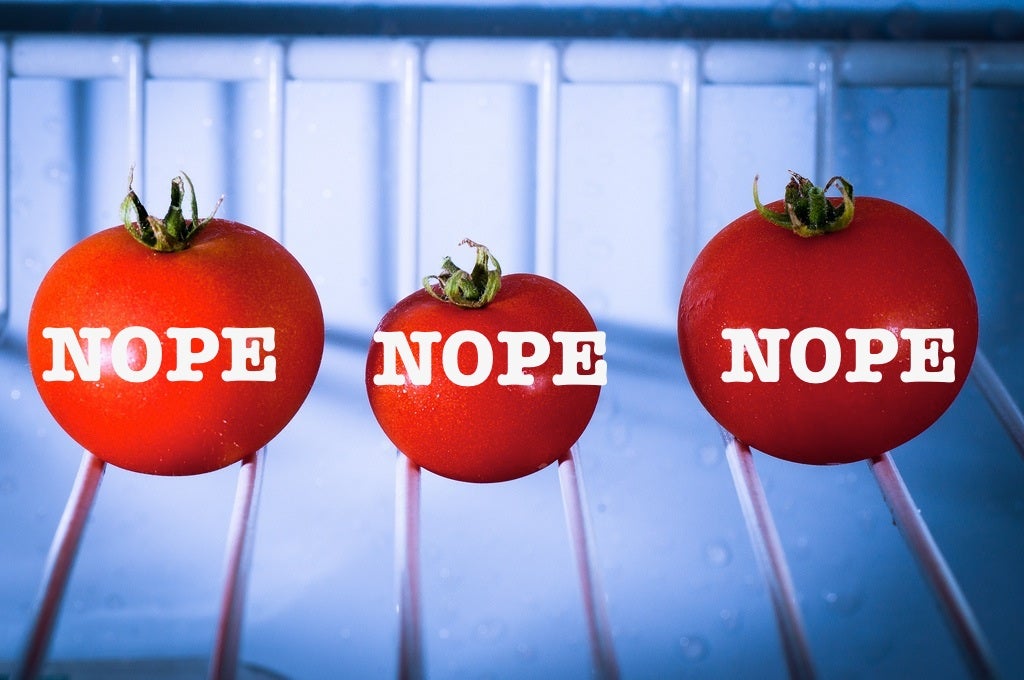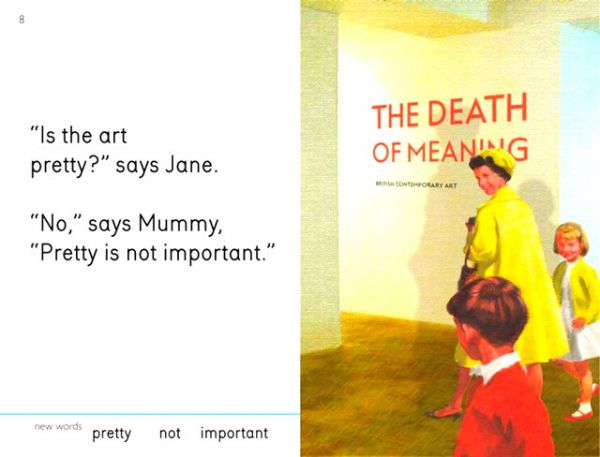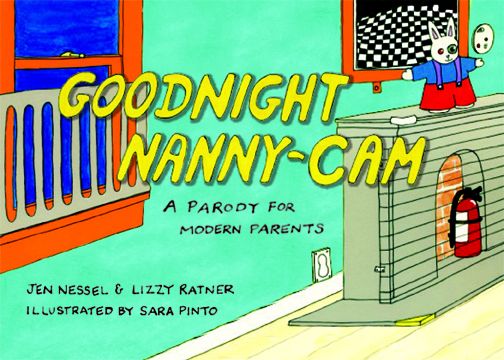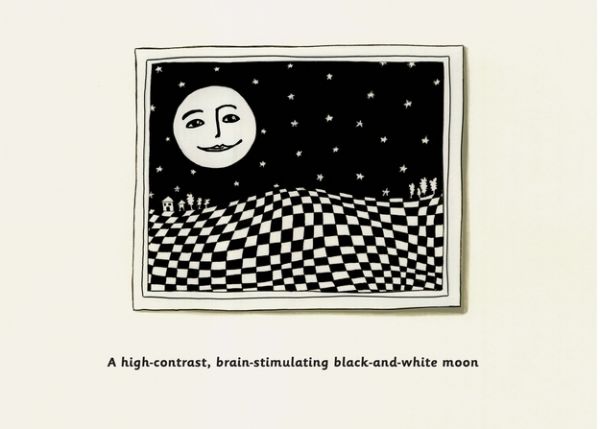
[Photograph: from Shutterstock.com]
Grains have been a staple of the human diet for the last, oh, 10,000 years. And if you think about it properly—by which I mean with a few debatable leaps of logic and some generous omissions—grains are also basically responsible for all the best things: beer, adorable pets, beds, cheesy popcorn, and, yes, internet. In that fertile crescent-agricultural revolution-cradle of civilization sense, that is.
But have you ever listened to someone wax rhapsodic about the delights of whole grains and thought to yourself, meh? Welcome to the club that I totally just quit.
The thing is, I'd always been secretly envious of people who love plain, undressed whole grains, all on their lonesome (I'm looking at you! You know who you are). Did I find them tolerable? Sure. Interesting? Often. But flavor-packed and craving-worthy? In my book...not so much so. Well. Turns out that book was a majorly abridged edition and once I learned just how many grains are out there and just how versatile they can be, it also started telling a completely different story.
Of course, grains can also be frustrating, confusing, and intimidating. What even qualifies as a grain, when is it whole, what's the deal with gluten, and, most importantly, what do you actually do with them??
Here's what you need to know. (Or, if you're already confident, feel free to jump on down to our whole grains index.)
Whole Grains 101
What are grains, anyway?
Virtually every folklore tradition tells of some sort of terrifying creature that creeps about, sucking the life force out of small children. When I eat whole grains, I like to think of myself as that creature.
Like the legumes and nuts with which they're often grouped, grains are seeds. In other words, hyper-concentrated packages of all the nutrients and energy it will need to turn into a self-sufficient plant. Enter the human, harvesting and culling those tiny lives for its own survival, in an endless cycle of parasitic glory.

[Illustration: Robyn Lee]
More specifically, that life force can be broken down into three edible parts:
-
The bran, the seed's outer skin, packed with fiber
-
The germ, or embryo (a.k.a. the best part). This is where you'll find all the good stuff—the disease-preventing, metabolism-boosting, blood-sugar-stabilizing, cholesterol-lowering antioxidants, fibers, vitamins, minerals, essential fatty acids, and the like.
-
The endosperm. This is the germ's food supply, which is mainly your starchy carbs.

[Illustration: Niki Achitoff-Gray]
But wait, there's more: Some grains are naked!
Corn, rye, and wheat are what we refer to as "naked" grains, meaning that they're made up of 100% edible parts right from the stalk. But most of the grains we eat—and there are thousands out there we can't even digest—are also encased in an inedible hull. Some are more easily removed than others; in certain cases, as with barley, it's exceedingly difficult to hull the grain without removing some or all of the bran and germ.
Okay, but then what actually qualifies as a whole grain?
In order for a grain to be labeled whole, it must retain 100% of its bran, germ, and endosperm. That rule applies no matter how the grain is packaged—a whole grain flour contains the same proportions as the whole seed. There's one main exception to this rule; because barley is extremely high in protein and other nutrients throughout even its endosperm, many consider it a whole grain even when it may not technically qualify. Take that, hull!
So what's the deal with white flour versus whole wheat flour?
Your typical white flour is made from wheat grains that have had the germ and bran removed—it's all endosperm up in that white bread and "regular" pasta, not to mention your white rice and pretty much any grain or grain-based product that isn't explicitly marked with the words "whole grain." That seven-grain bread does indeed contain seven grains, but unless it's seven-whole grain bread, you're still only getting the endosperm—still lots of flavor variety, but not the same nutritional profile.
Grains are refined for a few reasons. Sure, you may prefer those pastas and breads to their whole wheat counterparts, but flavor and aesthetics have less to do with it than you may think. Light, heat, and air are the sworn enemies of cooking oils, and the same goes for the oils in whole grains. Mass-produced grain products are often refined primarily to extend shelf-life and allow for non-refrigerated storage.
Where does gluten come into the picture?
You may be surprised by how few grains actually contain gluten—just wheat, barley, and rye. Then again, those three grains are the ones you'll most commonly find in breads and pastas, and with good reason. Why, you ask?
Let me tell you a story about two friends, named Glutenin and Gliadin (they're not from here, okay?). In a lot of ways they were pretty similar—they both grew up in the town of Endosperm, two proteins in a land of starches. And, at the time of this particular tale, they'd both been happily taking a rather prolonged nap in a bed of powdery flour.
One day, they were rudely awakened from their slumber, swept off their feet by a tidal wave of water. EEEH! they cried, as they skittered about beneath the descending shadow of two massive, fleshy palms. Quickly, they leapt into each others arms and and held onto each other for dear life. The more times the hands descended, the harder they clung, stretching their tiny little protein arms longer and longer. And if they passed another friend—for they were shocked to find themselves surrounded by millions of their ilk—they reached out another hand and grabbed hold, until all were united in a collective embrace. And though they soon met their demise in the fiery pit of Oven, their story of triumph and perseverance lived on, passed from generation to generation. And it was known as Gluten.

[Illustration: Niki Achitoff-Gray]
Okay, so not exactly. In the real world, gluten is a network of proteins that is developed when flour and water are combined and kneaded into dough. The more you work that dough, the more elasticity it will develop. It's what keeps doughs from falling into a puddly batter-like mass and it gives breads their structure, helps them rise, and delivers that chew factor. Striking the right level of gluten development is key to fresh pastas, pizza crusts, and most baked goods—though of course there are gluten-free adaptations that substitute that protein network with stabilizers like xanthan or guar gums, and even eggs.
You only mentioned wheat, barley, and rye—doesn't glutinous rice contain gluten, too?
The short answer is no. (Actually, so is the long answer). If you're gluten-intolerant or cooking for someone who is, know this: glutinous is not the same as glutenous. Are there glutenous grains that are also glutinous? Yes—barley's a great example! But "glutinous" actually describes an entirely different component of the grain—namely its level of amylopectin, a water-soluble component of starch. When it's released during cooking, amylopectin can produce a creamy, gelatinous sauce (think risotto). Grains like amaranth and short-grain rice make great porridges and soup fillers, especially when they're immersed in more liquid than they're able to absorb—otherwise they'll come out quite gluey (think sticky rice).
Okay, I bought some whole grains. Does it matter whether I store them in the refrigerator, freezer, or pantry?
Because whole grains are susceptible to rancidity, there are some worthwhile measures to take when selecting and storing them. If they're packaged, check for expiration dates and adhere to them; if they're in a bulk bin, take a big whiff and steer clear if you detect a rank or musty odor. And once you've gotten them home, you'll want to refrigerate or freeze your grains immediately. Pack 'em up in a zipper-top bag or tightly sealed container, mark the date of purchase, and keep them in a cool, dark place. I like to think hobbits would be especially well-suited to grain storage.
Cooking With Whole Grains
So now that I've got them, what should I actually DO with them?
Whole grains can be incorporated into your baking projects, fermented into home-brewed alcohol, popped or puffed into snack food, rolled into flakes for breakfast cereal, and oh-so-much more. But in their most basic state, all dry grains can be simmered in water until tender enough to eat (though just how tender that is will vary by dish and personal preference). If you've ever made rice, you get the basic idea.

[Illustration: Niki Achitoff-Gray]
Then again, if you've ever made rice, perhaps you've also had the charming experience of royally screwing it up. Yes, I, too have had the pleasure of scraping a gluey burnt mass from the base of a pot. So while package directions may be a good starting point for a liquid-to-grain ratio, they're not exactly what I'd call foolproof. There are three common ways to tackle grains; the method you choose will largely have to do with the grain you're using and the texture or flavor you're looking for.
Cooking Methods
1. The Absorption Method: This is the most straightforward technique—just cover your grains with a measured amount of liquid (according to package instructions), bring it to a boil, and then cover the pot, reduce the heat, and simmer away until all the liquid has been absorbed and the grains are tender, adding additional liquid if necessary.
2. The Pilaf Method: Briefly cooking grains over medium heat before adding liquid to the pot—traditionally in a small amount of oil or butter—will coax out its natural nuttiness, giving off a warm, toasty aroma. (For extra creamy preparations, check out our road to better risotto). If you're making a pilaf-style main or side, you can also start off by sautéing aromatics like onion, garlic, or spices. Add your grains and stir them regularly for two or three minutes before pouring in a measured amount of liquid. Once it reaches a boil, reduce the heat to low, cover the pot, and simmer the grains until the liquid's absorbed and the grains are tender, adding additional water if necessary.
3. The Rapid Boil (Pasta) Method: You can also make grains just like you would pasta, by pouring them into a pot of salted, boiling water and cooking them until tender. This works best for your firmer, chewier grains like barley, wheatberries, and sorghum—just strain them when they've reached your desired tenderness.
Before I get started, should I rinse or soak my grains?
Though many recipes will direct you to rinse grains, the vast majority of commercially available whole grains won't actually need it. But if you want to do it anyway, just make sure to rinse immediately before cooking—otherwise you run the risk of moldy or sprouted groats. Soaking a grain overnight, on the other hand, can help reduce the stovetop time for slow-cooking grains like spelt or barley and, according to some, produce more evenly cooked results. If you're planning ahead, it's never a bad idea.
Wait, but how will I know for sure when they're done?!?
Beware of recipes claiming to be foolproof! Even different batches of the same grain can vary in the amount of liquid and time they'll need to finish.

[Illustration: Niki Achitoff-Gray]
Your best friend is your mouth—when you're familiarizing yourself with a new grain, taste it regularly. Some like their grains al dente; others like 'em on the mushy side. But if you're really unsure, you can cut a grain in half: If there's still a white, opaque center, it's not fully cooked (though it's certainly still edible, if that's how you prefer it); if it's the same color throughout, you're definitely good to go!
Now I've got a ton of leftovers in my fridge. What's the best way to reheat whole grains?
Before you go about reheating, hit the pause button! Chilled grains make a great base for tossed salads—some chopped vegetables, mayhaps a sprinkle of cheese, and a drizzle of vinaigrette and you've got a surprisingly well-balanced meal. Otherwise, if you have a microwave, you can reheat grains in a bowl, covered with a paper towel. Or go the stovetop route—add the grains and a splash of water to a pot and steam them, covered, over medium-low heat until they're soft and warm.
Alright! Now that you're basically an expert in whole grains in general, I say we dive on into the specifics. Say hello to our index!
Whole Grains: The Index
We've pulled together the most commonly available whole grains and divided the descriptions by gluten content for clarity. Read through 'em all or jump straight to the one you're looking for!
| Gluten-Free Grains |
Glutenous Grains |
|
|
|
Gluten-Free Grains

[Photograph: Amaranth from Shutterstock.com]
Remarkably tiny and just slightly crunchy, amaranth* has a similar mouthfeel to tobiko (the minuscule fish roe you'll sometimes find on sushi rolls). And if you've ever shucked corn on the cob, you have a good sense of what it smells like—as soon as they hit the pan, the seeds release an intensely grassy aroma that translates to a slightly nutty, herbal flavor reminiscent of hay. On its own, that distinctive flavor can be a little overwhelming, but a touch of salt, lemon juice, and olive oil can work magic. Amaranth makes a great chilled taboulleh-style salad, but can also play nice with earthier warm ingredients like mushrooms or nutty cheeses. In many South American and South Asian cuisines, it's often cooked with additional water (up to 6 cups for a single cup of grain!) to make a glutinous breakfast porridge, or dry-popped and seasoned with either honey or savory spices as a snack or crunchy garnish.
*Unlike true grains—seeds from cereal grasses—amaranth grows from a broad-leafed plant; if you ever happen upon amaranth greens, they're edible too (and we love them).

[Photograph: Buckwheat from Shutterstock.com]
Confession: I've never been a big fan of whole buckwheat (often labeled as "buckwheat groats"). Between its slightly grainy texture and pronounced earthiness, I have trouble enjoying it on its own, or even in dishes like kasha varnishkes that, I should note, are beloved by many. But if you're like me and find yourself avoiding buckwheat, consider giving it another shot in more, shall we say, "diffused" environments. Yeast-risen crêpe-like buckwheat galettes and heftier buckwheat pancakes have a sour note that pairs well with sweet jams and syrups, or even savory items like smoked salmon. And it's hard not to fall for Japanese soba noodles, served chilled with a salty-sweet dipping sauce, or hot in a flavorful broth. Still not working for you? Don't sweat it. It's a big, grainy world out there.
If you go the whole-groat route, just be careful to coat them in egg, oil, or butter and toast them in a pan before adding your water—otherwise, you'll wind up with a pot of swollen mush.

[Photograph: Corn from Shutterstock.com]
What don't we do with corn? Seriously, think about it. We eat it off the cob, dried into hominy, ground and cooked into porridges like polenta or grits, popped and puffed into snacks, and processed into cornmeal for breads, muffins, chips, and tortillas. And that's not even counting the booze, animal feed, and industrial uses that make it one of the world's largest crops.
Of course, there's a different type of corn out there for each of those preparations, fresh sweet corn being the sweetest. As for your dry varieties, it's really just a matter of processing—grind dry yellow or white corn into bits, and you have the makings of creamy grits; grind it finer and you have quick corn grits. Mill it into a coarse flour, and you have polenta; mill it finer, and voilà! Cornmeal. Switch over to flint corn and repeat the process for hominy and hominy grits, and so on. And in case you were wondering, there's a whole separate breed just for popcorn.

[Photograph: Coixseed from Shutterstock.com]
Though relatively unknown in the West, coixseed/Job's Tears is a common ingredient in China, Korea, and Thailand. It's used to make tea and alcohol, and used with other herbs in traditional Chinese medicine. It can be cooked just like rice until plump and tender; it has a starchy texture and sweet, corn-like flavor that lends itself well to soups or stews.
It's worth noting that I had a hard time getting my hands on Job's Tears until I learned that it's available in most Asian groceries, somewhat misleadingly labeled as pearl barley. But a quick visual comparison will reassure you of the difference—coix seed is larger and rounder, with a wider groove running along the center. Just make sure you're buying the dried seed and not a puffed variety (just give 'em a squeeze if you're unsure).

[Photograph: Millet from Shutterstock.com]
You won't find many staunch advocates of millet out there. Which is too bad, because it's actually a pretty awesome grain. For starters, it practically quadruples in volume when cooked, which means you're getting a whole lot of bang for not much buck. It's also extremely mild, which sounds disappointing but actually winds up working in its favor, since it has a shape and texture similar to couscous when—and here's the rub—it's properly cooked. It's not that cooking millet is terribly difficult, mind you, it just takes some getting used to. Think about how much it grows—it's a thirsty, thirsty bastard of a grain, and if you deprive it of liquid, it will punish you with a gritty, dry, pasty pot of blah. Hydrate it properly, though, and you'll find yourself with a bowl of fluffy grains—the texture is like a cross between mashed potatoes and pasta—to dress with whatever sauce or seasonings you fancy.
And hey, if the whole grain still isn't to your liking, millet flour can also make a great gluten-free substitute for baked goods, like zucchini bread and pastry crusts.

[Photograph: Oats from Shutterstock.com]
If you've never picked up a bag of whole oats, they're worth a second glance. Like the rolled oats with which you're probably most familiar—whole groats that have been steamed and flattened for oatmeal—they taste very, bear with me now, oaty. And like the longer-cooking steel-cut, or Irish, oats, they still have their fibrous bran attached. But they'll also deliver a more robustly chewy texture that makes them a nice change of pace as a breakfast cereal, sweet crumbly casserole, baked into cookies, or even combined with savory ingredients as a risotto-style side.
*Though technically gluten-free, most oats have been cross-contaminated with wheat and should be consumed with caution if you have a gluten intolerance or allergy.

[Photograph: Quinoa from Shutterstock.com]
Remember five or ten years ago, when most Americans couldn't even pronounce quinoa? These days it's undoubtedly the trendiest of the so-called ancient grains (though if you want to get extra nerdy, quinoa, amaranth, and buckwheat don't technically belong to the grain family). It cooks quickly, takes on flavors easily, and gets a lot of attention for its "supergrain" status—meaning that it has more essential amino acids than most of its cousins (though, if you want to get extra, extra nerdy, so do amaranth and teff!).
Most quinoa is packaged as red, black, or white, and while there are subtle distinctions between the three (red holds its shape a bit better, while black is slightly nuttier and sweeter) you can use them interchangeably. I like my quinoa in a chilled salad like this one, this one, or really anything featuring bright, bold flavors—a squeeze of citrus, some tart tomatoes, a sprinkle of tangy feta, maybe a dash of fresh herbs—but in colder months, it makes a nice base for a hot meal of chicken and some bitter greens, mushrooms, and a fried egg. We also love it with shrimp and chickpeas or baked into sweet cakes studded with plums; at the end of the day, it's hard to go wrong with quinoa.

[Photograph: Rice from Shutterstock.com]
Where to begin? There are over 40,000 varieties of rice out there, which tends to limit one's ability to make grand generalizations. It's easiest to talk about rice in terms of length rather than flavor, with most short and medium grain varieties having the highest levels of amylopectin. They're your best candidate for rice pudding, risotto, sticky rice, and other glutinous preparations. Long grain rice, like basmati, jasmine, or Carolina, is usually higher in amylose—amylopectin's counterpart—and stays fluffy after cooking. It's used for traditional pilafs and fried rice, or as a bed for sauces. As for the difference between white and brown rice? It's a simple as this: white rice is brown rice, minus the bran.

[Photograph: Sorghum from Shutterstock.com]
I'd never tasted sorghum until I set out to write this post. Now, I'm obsessed. Mainly because you can pop the dry kernels into the cutest bowl of tiny "popcorn" imaginable. It tastes almost exactly the same, only it's insanely adorable. Seriously, check it out:

You can also cook it up whole—the pearls look almost exactly like Israeli couscous and take on a pronounced roasty flavor if you toast them in the pan a bit beforehand. Just be prepared for a long cook—even after the recommended 50 minutes, I find them on the tough end of chewy.

[Photograph: Robyn Lee]
If you thought amaranth was tiny, wait until you meet teff, the wee-ist grain in all the land. Its main claim to fame is injera, the spongy yeast-risen Ethiopian flatbread. If you've ever had injara, you might expect teff to be similarly sour, but it's actually quite mild and just faintly sweet. It's a versatile gluten-free flour and so long as you use enough liquid—water, stock, even a splash of milk or cream—the whole grains make a remarkably smooth polenta-like dish that can be eaten as-is, perhaps with some butter and a sprinkle of cheese or even sweetened with honey or agave. And, like polenta, you can spread it on a sheet tray to cool and then slice it for grilling or frying.

[Photograph: Wild rice from Shutterstock.com]
Chewy, nutty, and slightly herbal, long grain wild rice is one of the most distinctive grains out there. It's not technically a rice, nor is it particularly wild these days—domestically, most of it is cultivated in paddy fields in Minnesota and California, though it does grow naturally in a number of rivers and lakes across the Americas. Warm or chilled, it's usually combined with autumnal ingredients like dried cranberries and toasted nuts, roasted root vegetables, or squash, but you can also incorporate it into soups for some extra texture or combine it with "true" rice in a pilaf.
Glutenous Grains

[Photograph: Pearl barley from Shutterstock.com]
Unless you've been gluten-free your entire life, chances are you've had barley in one form or another—if not in salads, pilafs, soups, stews, or breads, then beer or whiskey. Cooked whole, it has a meaty chewiness that lends itself well to bulking up any dish it's added to. It's especially high in amylopectin, so it adds a nice silkiness to soupier foods. With a slightly malty character (hence beer) and a mild nutty sweetness, it's pretty palatable, even served pilaf-style with minimal seasoning. (And it's a key ingredient in our recipe for homemade vegan burgers that don't suck.) But if you prefer to amp things up, it's quite receptive to everything from root vegetables and aromatics to even the boldest of meats, like lamb.
Most of the barley that's commercially available is light in color and labeled "pearled," meaning that it's had both its hull and bran removed, and often the germ, too. While even pearled barley still retains substantial nutrients and cooks up faster and slightly more tender, if you're looking for the most robust option, seek out hulled barley, instead. Just consider giving it a soak overnight to help the process along.

[Photograph: Rye from Shutterstock.com]
Imagine a grain with the chewiness of barley or wheatberries and the flavor of rye bread—earthy, slightly sweet, but far more mild than buckwheat—and you've got rye. It pairs well with tangy acids (think the sauerkraut in your Rueben) and sweeter flavors—in the wintertime, it would make a nice, hearty dish with root vegetables like parsnips, turnips, sweet potatoes, or even beets. Or serve them in a room temperature salad with carrots, celery, cilantro, and almonds. And, of course, you can't talk rye without giving a nod to the dark, hearty eponymous loaf.

[Photograph: Wheat berries from Shutterstock.com]
Wheatberries, chewy and light, are one of my favorite salad grains. They do especially well with wintery ingredients like Brussels sprouts or fennel. Though cooking them takes some patience, the results are well worth it—they have a great wheaty flavor and a satisfying crunch that feels substantial and cozy, even when served room temperature. You'll find several varieties on shelves these days, from the more widely available durum wheatberry to ancient species like farro, spelt, and emmer. There are also semi-processed varieties like bulgar, which has been parboiled and roughly crushed for a faster cooking time and finer texture.
Farro: Faster cooking than durum wheatberries, farro has a yielding but substantial texture and mild, pasta-like flavor. Try it in a salad with lentils and roasted vegetables or mixed up with radicchio, prosciutto, and oranges.
Spelt: Though very similar to durum wheatberries, spelt has a more fibrous bite and toasted flavor. Be prepared for an extended cooking time—spelt bran is on the thick, tough side. Use it like farro or consider using the nutty flour for baking—perhaps a cinnamon-apple sour cream cake with spelt?
Bulgar: Fast-cooking parboiled and dried wheat, bulgar is a definite crowd-pleaser. It's the primary ingredient in traditional taboulleh and kibbe; alternatively, use it as a substitute for couscous or incorporate it into stuffings (it pairs nicely with lamb in this stuffed squash recipe), soups, or other grain-based dishes.
Couscous: Coarsely ground semolina wheat, which is traditionally rubbed with wet hands to form small granules (the larger variety is known interchangeably as pearled, Jerusalem, or Israeli couscous). Light, fluffy, and extremely versatile, couscous goes well with almost anything—pair it with crispy pancetta and butternut squash, seared scallops, fresh salad ingredients, or flavorful meats like lamb.
About the author: Niki Achitoff-Gray is the associate editor of Serious Eats and a recent graduate of the Institute of Culinary Education. She's pretty big into oysters, offal, and most edible things. You can follow her on Twitter at @eatandcry.







































































 (Image: CBS)
(Image: CBS)










